MQ Multiquip FS-FSN Installation guide
- Category
- Power tools
- Type
- Installation guide
This manual is also suitable for

OPERATION AND PARTS MANUAL
THIS MANUAL MUST ACCOMPANY THE EQUIPMENT AT ALL TIMES.
To find the latest revision of this
publication, visit our website at:
www.multiquip.com
MODEL FS AND FSN
FLEXSHAFTS
MODEL 900HD~2600HD
VIBRATOR HEADS
Revision #1 (02/28/19)

PAGE 2 — FLEXSHAFTS/VIBRATOR HEADS • OPERATION AND PARTS MANUAL — REV. #1 (02/28/19)
NOTES

FLEXSHAFTS/VIBRATOR HEADS • OPERATION AND PARTS MANUAL — REV. #1 (02/28/19) — PAGE 3
Grinding/cutting/drilling of masonry, concrete, metal and
other materials with silica in their composition may give
off dust or mists containing crystalline silica. Silica is a
basic component of sand, quartz, brick clay, granite and
numerous other minerals and rocks. Repeated and/or
substantial inhalation of airborne crystalline silica can
cause serious or fatal respiratory diseases, including
silicosis.In addition, California and some other
authorities have listed respirable crystalline silica as a
substance known to cause cancer. When cutting such
materials, always follow the respiratory precautions
mentioned above.
WARNING
Grinding/cutting/drilling of masonry, concrete, metal and
other materials can generate dust, mists and fumes
containing chemicals known to cause serious or fatal
injury or illness, such as respiratory disease, cancer,
birth defects or other reproductive harm. If you are
unfamiliar with the risks associated with the particular
process and/or material being cut or the composition of
the tool being used, review the material safety data
sheet and/or consult your employer, the material
manufacturer/supplier, governmental agencies such as
OSHA and NIOSH and other sources on hazardous
materials. California and some other authorities, for
instance, have published lists of substances known to
cause cancer, reproductive toxicity,or other harmful
effects.
Control dust, mist and fumes at the source where
possible. In this regard use good work practices and
follow the recommendations of the manufacturers or
suppliers, OSHA/NIOSH, and occupational and trade
associations.Water should be used for dust
suppression when wet cutting is feasible. When the
hazards from inhalation of dust, mists and fumes cannot
be eliminated, the operator and any bystanders should
always wear a respirator approved by NIOSH/MSHA for
the materials being used.
WARNING
SILICOSIS WARNING RESPIRATORY HAZARDS
SILICOSIS/RESPIRATORY WARNINGS

PAGE 4 — FLEXSHAFTS/VIBRATOR HEADS • OPERATION AND PARTS MANUAL — REV. #1 (02/28/19)
TABLE OF CONTENTS
Flexshaft/Vibrator Heads
Silicosis/Respiratory Warnings ................................ 3
Parts Ordering Procedures ...................................... 5
Safety Information ................................................ 6-8
Specifications ..................................................... 9-10
General Information .......................................... 11-12
Setup ................................................................ 13-14
Operation ............................................................... 15
Maintenance ..................................................... 16-17
Troubleshooting ..................................................... 18
Explanation Of Code In Remarks Column............. 19
Component Drawings
FS Series Flexible Shafts Assy. ........................ 20-21
FSN Series Flexible Shafts Assy. ..................... 22-23
HD Series Vibrator Steel Heads Assy. .............. 24-27
Terms And Conditions Of Sale — Parts ................ 28
NOTICE
Specifications and part numbers are subject to change
without notice.

FLEXSHAFTS/VIBRATOR HEADS • OPERATION AND PARTS MANUAL — REV. #1 (02/28/19) — PAGE 5
PARTS ORDERING PROCEDURES
www.multiquip.com
Ordering parts has never been easier!
Choose from three easy options:
WE ACCEPT ALL MAJOR CREDIT CARDS!
When ordering parts, please supply:
❒ Dealer Account Number
❒ Dealer Name and Address
❒ Shipping Address (if different than billing address)
❒ Return Fax Number
❒ Applicable Model Number
❒ Quantity, Part Number and Description of Each Part
❒ Specify Preferred Method of Shipment:
✓ UPS/Fed Ex ✓ DHL
■ Priority One ✓ Tr uck
■ Ground
■ Next Day
■ Second/Third Day
If you have an MQ Account, to obtain a Username
and Password, E-mail us at:
parts@multiquip.
com.
To obtain an MQ Account, contact your
District Sales Manager for more information.
Order via Internet (Dealers Only):
Order parts on-line using Multiquip’s SmartEquip website!
■ View Parts Diagrams
■ Order Parts
■ Print Specification Information
Note: Discounts Are Subject To Change
Goto www.multiquip.com and click on
Order Parts
to log in and save!
Use the internet and qualify for a 5% Discount
on Standard orders for all orders which include
complete part numbers.*
Order via Fax (Dealers Only):
All customers are welcome to order parts via Fax.
Domestic (US) Customers dial:
1-800-6-PARTS-7 (800-672-7877)
Fax your order in and qualify for a 2% Discount
on Standard orders for all orders which include
complete part numbers.*
Order via Phone:
Domestic (US) Dealers Call:
1-800-427-1244
Best Deal!
International Customers should contact
their local Multiquip Representatives for
Parts Ordering information.
Non-Dealer Customers:
Contact your local Multiquip Dealer for
parts or call 800-427-1244 for help in
locating a dealer near you.
Note: Discounts Are Subject To Change
Effective:
January 1
st
, 2006
NOTICE
All orders are treated as Standard Orders and will
ship the same day if received prior to 3PM PST.

PAGE 6 — FLEXSHAFTS/VIBRATOR HEADS • OPERATION AND PARTS MANUAL — REV. #1 (02/28/19)
SAFETY INFORMATION
DO NOT operate or service the equipment
before reading the entire manual. Safety
precautions should be followed at all times
when operating this equipment. Failure to
read and understand the safety messages
and operating instructions could result in injury to yourself
and others.
SAFETY MESSAGES
The four safety messages shown below will inform you
about potential hazards that could injure you or others. The
safety messages specifi cally address the level of exposure
to the operator and are preceded by one of four words:
DANGER, WARNING, CAUTION
or NOTICE.
SAFETY SYMBOLS
Potential hazards associated with the operation of this
equipment will be referenced with hazard symbols which
may appear throughout this manual in conjunction with
safety messages.
DANGER
Indicates a hazardous situation which, if not avoided,
WILL result in DEATH or SERIOUS INJURY.
WARNING
Indicates a hazardous situation which, if not avoided,
COULD result in DEATH or SERIOUS INJURY.
CAUTION
Indicates a hazardous situation which, if not avoided,
COULD result in MINOR or MODERATE INJURY.
NOTICE
Addresses practices not related to personal injury.
Burn hazards
Symbol Safety Hazard
Electric shock hazards
Earth Ground
Protected against splashing
water
IPX-4
To reduce risk of injury user
must read instruction manual
PERSONAL SAFETY
CAUTION
Stay alert, watch what you are doing and
use common sense when operating a
power tool. Do not use a power tool while
you are tired or under the infl uence of
drugs, alcohol or medication. A moment
of inattention while operating power tools may result in
serious personal injury.
Use personal protective equipment. Always wear eye
protection. Protective equipment such as dust mask,
non-skid safety shoes, hard hat, or hearing protection
used for appropriate conditions will reduce personal
injuries..
Prevent unintentional starting. Ensure the switch is in
the off-position before connecting to power source and/
or battery pack, picking up or carrying the tool. Carrying
power tools with your fi nger on the switch or energizing
power tools that have the switch on invites accidents.
Remove any adjusting key or wrench before turning the
power tool on. A wrench or a key left attached to a rotating
part of the power tool may result in personal injury.
DO NOT
overreach. Keep proper footing and balance at
all times. This enables better control of the power tool in
unexpected situations.
Dress properly. Do not wear loose clothing or jewelry.
Keep your hair, clothing and gloves away from moving
parts. Loose clothes, jewelry or long hair can be caught
in moving parts.
If devices are provided for the connection of dust
extraction and collection facilities, ensure these are
connected and properly used. Use of dust collection can
reduce dust-related hazards.

FLEXSHAFTS/VIBRATOR HEADS • OPERATION AND PARTS MANUAL — REV. #1 (02/28/19) — PAGE 7
SAFETY INFORMATION
GENERAL POWER TOOL SAFETY WARNINGS
WARNING
Read all safety warnings and all instructions.
Failure to follow the warnings and instructions
may result in electric shock, fire and/or
serious injury.
Save all warnings and instructions for future reference.
NOTICE
The term "power tool" in the warnings refers to your
mains-operated (corded) power tool or battery-operated
(cordless) power tool.
WORK AREA SAFETY
Keep work area clean and well lit. Cluttered or dark areas
invite accidents.
DO NOT operate power tools in explosive atmospheres,
such as in the presence of fl ammable liquids, gases or
dust. Power tools create sparks which may ignite the dust
or fumes.
Keep children and bystanders away while operating a
power tool. Distractions can cause you to lose control.
ALWAYS clear the work area of any debris, tools, etc.
that would constitute a hazard while the equipment is
in operation.
No one other than the operator is to be in the working
area when the equipment is in operation.
DO NOT use the equipment for any purpose other than
its intended purposes or applications.
NOTICE
This equipment should only be operated by trained and
qualifi ed personnel 18 years of age and older.
Whenever necessary, replace nameplate, operation and
safety decals when they become diffi cult read.
Manufacturer does not assume responsibility for any
accident due to equipment modifi cations. Unauthorized
equipment modifi cation will void all warranties.
NEVER use accessories or attachments that are not
recommended by Multiquip for this equipment. Damage
to the equipment and/or injury to user may result.
ALWAYS know the location of the nearest
fi re extinguisher.
ALWAYS know the location of the nearest
fi rst aid kit.
ALWAYS know the location of the nearest phone or
keep
a phone on the job site.
Also, know the phone numbers
of the nearest ambulance, doctor and
fi re department.
This information will be invaluable in the case of an
emergency.
FLEXSHAFT SAFETY
DANGER
ALWAYS
wear rubber insulated gloves and boots when
holding the fl exshaft during operation. The possibility of
electrocution exists causing equipment damage and
severe bodily harm even death!
DANGER
If applicable, periodically check insulation resistance
as referenced in maintenance section. The possibility
of electrocution exists causing equipment damage and
severe bodily harm even death!
WARNING
NEVER
attempt to run the core outside the casing
assembly for any reason.
CAUTION
DO NOT
carry plugged-in motor with fi nger on the switch.
NEVER
carry the motor by the cord. Use the carrying
handle.
ALWAYS
check the vibrator motor for loosened hardware
such as nuts and bolts before starting.
Keep the cord from heat, oil, and sharp objects.
DO NOT
overload the motor. It will do a better and safer
job at the rate for which it was designed.

PAGE 8 — FLEXSHAFTS/VIBRATOR HEADS • OPERATION AND PARTS MANUAL — REV. #1 (02/28/19)
SAFETY INFORMATION
DO NOT expose vibrator motor to rain.
DO NOT use vibrator motor in damp or wet locations
without proper electrical circuits.
ALWAYS keep clear of rotating or moving parts while
operating the vibrator motor.
NEVER leave the machine unattended while running.
ALWAYS disconnect the motor from the power source
when not in use, before servicing, and when changing
fl exible shafting and vibrator heads.
Allow the vibrator motor to cool before
servicing. Contact with hot components can
cause serious burns.
Before each use, ALWAYS check the motor
to make certain that there are no damaged parts and that
all parts function properly (such as switch, cord housing).
If any damage or malfunctioning parts are found, have
them repaired or replaced by an authorized service facility.
NOTICE
Secure forms. Make sure the form work is well made and
braced to withstand the stresses made by vibration.
Keep vibrator motor clean for better and safer operation.
ALWAYS store equipment properly when it is not being
used. Equipment should be stored in a clean, dry location
out of the reach of children and unauthorized personnel.
Use only factory-authorized replacement parts.
Store idle vibrator motor. When not in use, motor should
be stored in a dry, safe storage area.
ELECTRICAL SAFETY
CAUTION
Power tools must match the outlet. NEVER
modify the plug
in any way. DO NOT
use any adapter plugs with earthed
(grounded) power tools. Unmodifi ed plugs and matching
outlets will reduce risk of electric shock.
Avoid body contact with earthed or grounded surfaces
such as pipes, radiators, ranges and refrigerators. There is
an increased risk of electric shock if your body is earthed
or grounded.
DO NOT
expose power tools to rain or wet conditions.
Water entering a power tool will increase the risk of
electric shock.
DO NOT abuse power cord. NEVER
use the cord for
carrying, pulling or unplugging the power tool. Keep cord
away from heat, oil sharp edges or moving parts. Damaged
or entangled cords increase the risk of electric shock.
When operating a power tool outdoors, use an extension
cord suitable for outdoor use. Use of a cord suitable for
outdoor use reduces the risk of electric shock.
If operating a power tool in a damp location is unavoidable,
use a residual current device (RCD), or Ground fault circuit
interrupter (GFCI) protected supply. Use of an RCD or
GFCI reduces the risk of electric shock.
When applicable, use a protection wiring device, such
as a Ground Fault Circuit Interrupter, for the protection
of personnel.
Operate electric motor only at the specifi ed voltage
indicated on the nameplate.
DO NOT spray water onto electric motor.
DO NOT
yank the cord to disconnect it from the
receptacle. Grasp the plug itself to disconnect it.
ALWAYS
make sure the ON/OFF switch on the electric
motor is in the OFF position when not in use and before
inserting the power plug into an AC receptacle.
Before plugging the motor into a power source,
ALWAYS
remove any wrenches or other tools from the motor,
shaft, and head that were used for assembly.

FLEXSHAFTS/VIBRATOR HEADS • OPERATION AND PARTS MANUAL — REV. #1 (02/28/19) — PAGE 9
SPECIFICATIONS
Table 1. FS Series Flexible Shafts
Model#
Length
ft. (m)
Weight
lb (kg)
FS3 3 (0.9) 5 (2.3)
FS7 7 (2.1) 11 (4.9)
FS10 10 (3) 16 (7.2)
FS12 12 (3.7) 18 (8)
FS14 14 (4.3) 20 (9)
FS21 21 (6.4) 28 (12.7)
Table 2. FSN Series Flexible Shafts
Model#
Length
ft. (m)
Weight
lb (kg)
FSN2 2 (0.6) 3 (1.3)
FSN7 7 (2.1) 6 (2.9)
FSN10 10 (3) 9 (4.0)
FSN12 12 (3.7) 10 (4.8)
FSN14 14 (4.3) 11 (5.1)
FSN21 21 (6.4) 18 (8.3)
Table 3. Maximum Flexible Shaft Lengths
Flexible
Shaft
Max Shaft Length
ft (m)
Vibrator Head Motor
FSN 21 (6.4) 900HD, 1000HD CV1/BPX
FS 28 (8.5) 1400HD, 1700HD CV2/BPX
FS
21 (6.4)
*
2100HD CV2/BPX
FS
35 (10.7)
*
1400HD, 1700HD, 2100HD, 2600HD CV3/BPX/G55H
* Requires Shaft Coupler P/N FSC
Table 4. Vibrator Heads
Model
Diameter
in (mm)
Length
in (cm)
Weight
lb (kg)
Required
Shaft
Required
Motor
900HD 7/8 (22) 14 1/2 (37) 2.1 (1) FSN CV1/BPX
1000HD 1 1/16 (27) 13 7/8 (35) 2.8 (1.3) FSN CV1/BPX
1400HD 1 3/8 (35) 15 1/4 (39) 5.2 (2.4) FS CV2/CV3/BPX/G55H
1700HD 1 11/16 (43) 15 (38) 6.4 (2.9) FS CV2/CV3/BPX/G55H
2100HD 2 1/8 (54) 13 1/4 (34) 9.4 (4.3) FS CV2/CV3/BPX/G55H
2600HD 2 5/8 (67) 13 1/4 (34) 13.4 (6.1) FS CV3/BPX/G55H

PAGE 10 — FLEXSHAFTS/VIBRATOR HEADS • OPERATION AND PARTS MANUAL — REV. #1 (02/28/19)
SPECIFICATIONS
Table 5. Drive Motors (Electric/Gasoline)
Model# Amps Voltage/Frequency HP (kW) RPM
Required
Shaft
Type
CV1A 10 115 VAC 50/60 Hz 1 (1.2) 16,000 FSN Electric
CV2A 15 1150 VAC 50/60 Hz 2 (1.8) 18,000 FS Electric
CV2B 7.5 230 VAC 50/60 Hz 2 (1.8) 18,000 FS Electric
CV3A 20 115 VAC 50/60 Hz 3 (2.4) 19,250 FS Electric
CV3B 10 230 VAC 50/60 Hz 3 (2.4) 19,250 FS Electric
G55H N/A N/A 4.8 (3.6) 3,600 FS Gasoline
BPX N/A N/A 2.1 (1.6) 7,000 FS, FSN Gasoline
NOTICE
Vibration techniques, vibrator head placement and
spacing as referenced in the "General Information" and
"Operation" sections of this manual is only to be used
as a guidline. Multiquip assumes no responsibility for
vibrator operating techniques referenced in this manual.
The consoldation of concrete has many mitigating
factors that must be considered such as slump, mix,
depth of vibrator, vibrator spacing, vibration time,
vibration frequency, temperature. All of these factors
must be considered when the consildation (vibration)
of concrete is required.

FLEXSHAFTS/VIBRATOR HEADS • OPERATION AND PARTS MANUAL — REV. #1 (02/28/19) — PAGE 11
GENERAL INFORMATION
Multiquip's flex-shafts vibrator heads are designed to work
in medimum to high slump concrete. Typical applications
include small pours, slabs driveways, stem walls and
footings.
Typical shaft lengths range from 2 to 21 feet (0.6 to 6.4
meters). See Table 3 for the various recommended shaft
lengths.
Vibrating steel heads are attached to one end of the flex-
shaft. These heads generate a vibration via an eccentric
rotator that consoldates the concrete by removing air
pockets. The round head design allows for the transmisssion
of vibration in all directions.
There are 6 different steel head sizes that range from
7
/
8
to 2
5
/
8
inches in diameter. Typical vibration frequency for
these vibrating heads range from 9,200 to 12,150 VPM
with 1-inch slump when using electric motors.
WHY VIBRATE CONCRETE
To ensure optimum strength and durability, vibration of
fresh concrete is an important requirement. Vibration or
compaction is the principal method for consolidation of
concrete.
CONSOLIDATION
Consolidation elimates pockets of aggregate and air
bubbles maximizing strength, eliminating surface voids.
Vibrators consolidate concrete by transmitting shock waves
which allow the aggregate to float freely while pushing
lighter trapped air up and out of the concrete mix.
A properly consoldated concrete pour will display a thin line
of mortar appearing along the form near the vibrator and the
coarse aggregate has been dispersed evenly throughout
the pour and is not visible.
VIBRATION TIME
Vibration time depends on frequency. The higher the
frequency, the less vibration time is required for the job.
VIBRATION RANGE
Vibration range (Figure 1) can be defined as "Area of
Influence". This area of influence (vibrating radius) is the
distance from the center of the vibrator to the outer most
edge.
Figure 1. Vibrator Radius/Spacing
Table 6 shows the vibration radius and spacing for a given
vibrator head diameter.
R
AREA
OF INFLUENCE
(VIBRATING RADIUS)
VIBRATOR HEAD
INSERTION SPACING
D
Table 6. Vibrating Radius/Insertion Spacing
Vibrating
HD. Model
Vibrator HD.
Dia. in. (mm)#
Vibration
Radius (R)
Vibrator
Spacing (D)
900HD
7
/
8
(22) 4 (102) 6 (152)
1000HD 1
1
/
16
(27) 5.5 (140) 8.25 (210)
1400HD 1
3
/
8
(35) 8 (203) 12 (305)
1700HD 1
11
/
16
(43) 12 (305) 18 (457)
2100HD 2
1
/
8
(54) 14 (356) 21 (533)
2600HD 2
5
/
8
(67) 18 (457) 27 (686)
NOTICE
Radius (area of influence R) and vibrator head spacing
(D) are expressed in inches/millimeters. Radius and
distance values expressed in Table 6 are only to be
used as a general guide. Values are subject to change.
NOTICE
Vibrator head spacing distance (D) is calculated by
multiplying the vibrating head radius (area of influence)
by 1.5.

PAGE 12 — FLEXSHAFTS/VIBRATOR HEADS • OPERATION AND PARTS MANUAL — REV. #1 (02/28/19)
GENERAL INFORMATION
When determining which head to choose it is important
to access the application. Mainly what are the dimensions
of the application. Select the vibrator head based on its
radiating radius charactertics. Reference Table 6.
Select the vibrating head that covers the largest possible
area without excessive overkill. This will allow for more
efficient productivity. General rule of thumb is DO NOT
select a vibrator head which has a vibration radius of more
than twice the width of the form.
Example:
If the form width is 9 inches (229 mm) the selected vibrator
head radius should not exceed an 18 inch (457 mm) radius.
In this example the 2600HD vibrator head would be the
recommended choice. Reference Table 6 and Figure 2.
AREA OF INFLUENCE
(VIBRATING RADIUS)
VIBRATOR HEAD
INSERTION SPACING
VIBRATOR HEAD
INSERTION POINT
CONCRETE
TOO SMALL AREA
OF INFLUENCE
(VIBRATING RADIUS)
NO VIBRATION
NO VIBRATION
CORRECT
FORM
WIDTH
Figure 2. Head Selection

FLEXSHAFTS/VIBRATOR HEADS • OPERATION AND PARTS MANUAL — REV. #1 (02/28/19) — PAGE 13
SETUP
ATTACHING VIBRATOR HEAD TO FLEXIBLE SHAFT
1. Apply a ring of anaerobic sealant (Loctite™ No. 271)
to flexshaft threads as shown in Figure 3.
2. Insert coupler into flexshaft as shown in Figure 3.
Figure 3. Attaching Vibrator Head to Flexible Shaft
QUICK
DISCONNECT
COUPLER
(MALE)
SPINDLE AND
CORE ARE ATTACHED
(1 PIECE)
CORE
LOCTITE™ 271
PIPE THREAD
LOCTITE™ 271
PIPE THREAD
VIBRATOR
HEAD
LEFT-HAND
THREADS
RIGHT-HAND
THREADS
P/N 500300122
FS/FSN SERIES
FLEXIBLE
SHAFTS
3. Attach vibrator head onto flexshaft as shown in Figure 3.
4. Use a wrench and tighten vibrator head securely to
flexshaft. Threads are left-handed.
NOTICE
All flexshaft cores have been lubricated (greased) at
the factory and are ready for use.
NOTICE
FS/FSN series flexshafts do not require a spindle.
Spindle is permanently attached to the wire core.

PAGE 14 — FLEXSHAFTS/VIBRATOR HEADS • OPERATION AND PARTS MANUAL — REV. #1 (02/28/19)
ATTACHING FLEXSHAFT TO DRIVE MOTOR
1. Pull upward on drive motor quick disconnect knob.
Insert coupler-end of flext-shaft into drive motor
housing. Reference Figure 4.
2. Make sure flexshaft has been seated securely. Release
drive motor quick disconnect knob.
Figure 4. QD Coupler Connection
QUICK
DISCONNECT
KNOB (PULL)
QUICK
DISCONNECT
COUPLER
DRIVE
MOTOR
END
FLEX-SHAFT
QUICK
DISCONNECT
KNOB (RELEASE)
SETUP
INSTALLING FSC SHAFT COUPLER
The FSC shaft coupler allows for the extension of the FS
Series flexible shafts. Maximum extension length shall not
exceed 35 ft (10.6 meters).
This shaft extension coupler is only to be used on FS series
flexible shafts.
1. Install FSC shaft coupler as shown in Figure 5.
2. Apply anaerobic sealant as required. Tighten FSC
coupler securely.
NOTICE
All FS Series flexible shafts are supplied with a quick
disconnect (QD) coupler. This coupler is not required
for flex shaft extenstion.
QUICK
DISCONNECT
COUPLER
FS21
FLEXIBLE SHAFT
(21 FT./6.4 M)
FS14
FLEXIBLE SHAFT
(14 FT./4.3 M)
VIBRATING
HEAD
FSC
COUPLER
TOTAL LENGTH=35FT. (10.6 METERS)
Figure 5. FSC Coupler Installation

FLEXSHAFTS/VIBRATOR HEADS • OPERATION AND PARTS MANUAL — REV. #1 (02/28/19) — PAGE 15
OPERATION
OPERATION
Before connecting any of the flexible shafts referenced in
this manual, please read any and all operating instructions
relating to the drive motor associated with the flexible shaft.
Using the wrong drive motor can adversely affect the
performance of the flexshaft/vibrating head. Selecting too
large a flexshaft/vibrating head combination will overload
the motor and cause excessive wear.
1. Hold vibrator head above concrete pour when starting
drive motor. This will prevent the vibrator head from
bouncing on hard surfaces which could damage the
bearings.
2. Keep flexshaft (Figure 6) straight as possible when
operating. Sharp bends increase the load on the core
and drive motor, which will result in early core failure
and possible damage to the drive motor.
Figure 6. Vibrator Head Insertion
3. Completely immerse the vibrator head quickly into
the concrete mix at a verticle rate of about one foot
per second (0.3 meters/second). Vibrate concrete for
about 5 to 15 seconds for wet mixes. For stiff mixes
vibrate 2-3 minutes.
4. Stop vibration of concrete mix when concrete has a
level, glossy surface and there are no breaking air
bubbles.
5. Slowly lift the head out of the mix using an up and
down movement. This slight up and down movement
will close the hole formed by the vibrator.
1-1/2 TIMES AREA
OF INFLUENCE
CORRECT
INCORRECT
FLEX-SHAFT
VIBRATOR HEAD
VIBRATOR HEAD
6. When lifting the head out of the concrete, withdraw
slowly at a rate of about 3 sec./ft. Using this technique
will avoid the re-trapping of air.
7. When near the top of the mix, withdraw the vibrator
quickly.
8. Re-insert vibrator into mix according to the "area
of influence" See Figure 6. Establish a symmertical
overlapping pattern for inserting and removing the
vibrator head.
9. If concrete is poured in layers, allow vibrator to pass
within 3 to 6 inches (76 to 152 mm.) into next layer to
ensure the knitting of the two layers. The complete
bonding of layers will prevent "lift lines" when forms
are removed.
NOTICE
DO NOT use vibrator to move concrete laterally. This
will cause segregation of the concrete. Use a shovel
or similar device to spread the concrete.

PAGE 16 — FLEXSHAFTS/VIBRATOR HEADS • OPERATION AND PARTS MANUAL — REV. #1 (02/28/19)
MAINTENANCE
FLEXSHAFT LUBRICATION (100 HOURS)
1. Using a bench vice and wrench, remove coupler from
flexshaft as shown in Figure 7. Please note threads
are right-handed on this side of the flexshaft (drive
motor end).
2. Heat should be applied to the threads to break down
the anaerobic sealant. Applying heat will help prevent
possible damage to threads.
3. Next, using a wrench and bench vise if necessary,
remove flexible shaft from vibrator head as shown in
Please note threads are left-handed on this side of
the flexshaft (vibrator end).
4. Pull the wire core out from casing. Using a clean soft
cloth wipe the grease off as it is pulled from the casing.
Wipe clean.
Figure 7. Removing Wire Core
5. Inspect the core for broken wires, permanent set or
other damage such as an area that indicates high wear
or having overheated. If any of these conditions exist
replace flexible shaft.
6. Use the core to push a cleaning patch through the
casing to remove any old grease or foreign matter that
may have accumulated inside the casing.
VIBRATOR
HEAD
LEFT-HAND
THREAD
RIGHT-HAND
THREAD
BENCH
VISE
APPLY
HEAT
FLEXSHAFT
APPLY
HEAT
COUPLER
NOTICE
DO NOT use solvents to clean casing. Applying solvents
to the core or casing may cause grease (lubricant) to
breakdown, resulting in damage to the flexshaft.
7. Thoroughly clean wire core (Figure 8) if it is being
reused. A wire brush may be required to remove
hardened residue.
Figure 8. Cleaning Wire Core
8. Apply a light amout of DuBois "TPG" lubricant (Figure 8)
or a good grade bearing grease to the entire length of
the wire core.
9. Reinstall wire core back into casing. When re-attaching
coupler and vibrator head to flexshaft, clean mating
threads with an anaerobic sealant primer. Allow primer
to dry for several minutes.
10. Also apply a ring of anaerobic sealant (Loctite™ No.
271) to the middle of the casing ferrule threads.
11. Screw the vibrator head back onto flexshaft casing.
Wait one hour before using.
12. Apply anaerobic sealant to coupler threads. Insert
coupler back into flexshaft. Tighten securely. Wait one
hour before using.
TPG
LUBRICANT
WIRE
CORE
CLOTH
WIRE
BRUSH
NOTICE
DO NOT force casing full of grease. A tightly packed
casing will load the drive motor which could lead to
overheating.

FLEXSHAFTS/VIBRATOR HEADS • OPERATION AND PARTS MANUAL — REV. #1 (02/28/19) — PAGE 17
VIBRATOR HEAD LUBRICATION (300 HOURS)
1. Using a wrench, remove vibrator tip (Figure 9) from
vibrator head body. Have a cloth handy to catch any
spilled oil.
Figure 9. Adding Oil (Vibrator Head)
2. Drain old oil from vibrator head body (casing). Place
oil in a suitable container. DO NOT pour oil on the
ground.
3. Fill vibrator head body with SAE 15 or AW MV ISO 46
type oil or equivalent.
4. DO NOT fill head body beyond capacity. Reference
Table 7.
VIBRATOR
HEAD OIL
VIBRATOR
HEAD
WRENCH
TIP
RIGHT-HAND
THREADS
NOTICE
Dispose used vibrator head oil in accordance with city,
local and state environmental guidlelines.
NOTICE
DO NOT overfill. Too much oil in the vibrator head will
overload the drive motor.
MAINTENANCE
VIBRATOR HEAD WEAR (300 HOURS)
1. Periodically measure the outside diameter (Figure 10)
of the vibrator head casing.
Figure 10. Vibrator Head Diameter
2. Replace vibrator head if it is not within minimum wear
tolarances as specified in Table 8.
Table 7. Vibrator Head Oil Capacity
Vibrating
HD. Model
Oil Capacity.
oz. (ml)#
Vibrating
HD. Model
Oil Capacity.
oz. (ml)#
900HD 0.5 (15) 1700HD 0.75 (22)
1000HD 0.5 (15) 2100HD 1 (30)
1400HD 0.5 (15) 2600HD 1.5 (44)
VIBRATOR HEAD
CASING DIAMETER
Table 8. Vibrator Head Wear Diameter
Vibrator
Head
Vibrator Head Dia.
in. (mm)#
Vibrator Head Min
Wear Dia. in. (mm)
900HD
7
/
8
(22.22)
13
/
16
(20.62)
1000HD 1
1
/
16
(26.98) 1 (25.4)
1400HD 1
3
/
8
(34.92) 1
1
/
4
(31.75)
1700HD 1
11
/
16
(42.86) 1
9
/
16
(39.67)
2100HD 2
1
/
8
(53.97) 1
7
/
8
(47.62)
2600HD 2
5
/
8
(66.67) 2
1
/
4
(57.15)

PAGE 18 — FLEXSHAFTS/VIBRATOR HEADS • OPERATION AND PARTS MANUAL — REV. #1 (02/28/19)
TROUBLESHOOTING
Table 9. Generator Troubleshooting
Symptom Possible Problem Solution
Flexshaft Binding
Flexshaft kinked? Straighten out flexshaft.
Defective flexshaft? Replace flexshaft.
Too much grease in flexshaft
casing?
Relube flexshaft.
Leaking Vibrator Head
Too much oil in head casing? Fill head casing to recommended level.
Head bearings/seals defective? Replace vibrator head.

FLEXSHAFTS/VIBRATOR HEADS • OPERATION AND PARTS MANUAL — REV. #1 (02/28/19) — PAGE 19
EXPLANATION OF CODE IN REMARKS COLUMN
The following section explains the different symbols and
remarks used in the Parts section of this manual. Use the
help numbers found on the back page of the manual if there
are any questions.
SAMPLE PARTS LIST
NO.
PART NO. PART NAME QTY. REMARKS
1 12345 BOLT
.....................1 .....INCLUDES ITEMS W/%
2% WASHER, 1/4 IN.
..........NOT SOLD SEPARATELY
2% 12347 WASHER, 3/8 IN.
..1 .....MQ-45T ONLY
3 12348 HOSE
..................A/R ...MAKE LOCALLY
4 12349 BEARING
..............1 .....S/N 2345B AND ABOVE
NO. Column
Unique Symbols — All items with same unique symbol
(@, #, +, %, or >) in the number column belong to the
same assembly or kit, which is indicated by a note in the
“Remarks” column.
Duplicate Item Numbers — Duplicate numbers indicate
multiple part numbers, which are in effect for the same
general item, such as different size saw blade guards in
use or a part that has been updated on newer versions
of the same machine.
PART NO. Column
Numbers Used — Part numbers can be indicated by a
number, a blank entry, or TBD.
TBD (To Be Determined) is generally used to show a
part that has not been assigned a formal part number
at the time of publication.
A blank entry generally indicates that the item is not sold
separately or is not sold by Multiquip. Other entries will
be clarifi ed in the “Remarks” Column.
NOTICE
The contents and part numbers listed in the parts
section are subject to change without notice. Multiquip
does not guarantee the availability of the parts listed.
NOTICE
When ordering a part that has more than one item
number listed, check the remarks column for help in
determining the proper part to order.
QTY. Column
Numbers Used
— Item quantity can be indicated by a
number, a blank entry, or A/R.
A/R (As Required) is generally used for hoses or other
parts that are sold in bulk and cut to length.
A blank entry generally indicates that the item is not sold
separately. Other entries will be clarifi ed in the “Remarks”
Column.
REMARKS Column
Some of the most common notes found in the “Remarks”
Column are listed below. Other additional notes needed
to describe the item can also be shown.
Assembly/Kit
— All items on the parts list with the
same unique symbol will be included when this item is
purchased.
Indicated by:
“INCLUDES ITEMS W/(unique symbol)”
Serial Number Break
— Used to list an effective serial
number range where a particular part is used.
Indicated by:
“S/N XXXXX AND BELOW”
“S/N XXXX AND ABOVE”
“S/N XXXX TO S/N XXX”
Specifi c Model Number Use
— Indicates that the part
is used only with the specifi c model number or model
number variant listed. It can also be used to show a
part is NOT used on a specifi c model or model number
variant.
Indicated by:
“XXXXX ONLY”
“NOT USED ON XXXX”
“Make/Obtain Locally”
— Indicates that the part can
be purchased at any hardware shop or made out of
available items. Examples include battery cables, shims,
and certain washers and nuts.
“Not Sold Separately”
— Indicates that an item cannot
be purchased as a separate item and is either part of an
assembly/kit that can be purchased, or is not available
for sale through Multiquip.

PAGE 20 — FLEXSHAFTS/VIBRATOR HEADS • OPERATION AND PARTS MANUAL — REV. #1 (02/28/19)
FS SERIES FLEXIBLE SHAFTS ASSY.
1
2
NOTE:
SPINDLE IS PART OF CORE.
1
2
1
QUICK-DISCONNECT (QD)
COUPLER IS INCLUDED WITH
ITEM 1.
2
3
3
SHAFT LENGTHS EXCEEDING
21 FT. (6.4 M) REQUIRE A SHAFT
EXTENSION COUPLER P/N FSC.
MAXIMUM SHAFT EXTENSION
SHALL NOT EXCEED 35 FT. (10.6 M)
.
3
Page is loading ...
Page is loading ...
Page is loading ...
Page is loading ...
Page is loading ...
Page is loading ...
Page is loading ...
Page is loading ...
Page is loading ...
Page is loading ...
-
 1
1
-
 2
2
-
 3
3
-
 4
4
-
 5
5
-
 6
6
-
 7
7
-
 8
8
-
 9
9
-
 10
10
-
 11
11
-
 12
12
-
 13
13
-
 14
14
-
 15
15
-
 16
16
-
 17
17
-
 18
18
-
 19
19
-
 20
20
-
 21
21
-
 22
22
-
 23
23
-
 24
24
-
 25
25
-
 26
26
-
 27
27
-
 28
28
-
 29
29
-
 30
30
MQ Multiquip FS-FSN Installation guide
- Category
- Power tools
- Type
- Installation guide
- This manual is also suitable for
Ask a question and I''ll find the answer in the document
Finding information in a document is now easier with AI
Related papers
-
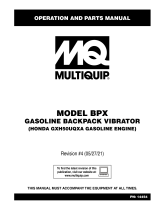 MQ Multiquip BPX Operating instructions
MQ Multiquip BPX Operating instructions
-
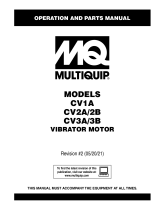 MQ Multiquip CV1A-2A-2B-3A-3B-UL-CE Operating instructions
MQ Multiquip CV1A-2A-2B-3A-3B-UL-CE Operating instructions
-
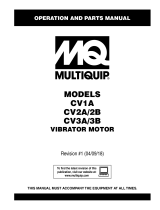 MQ Multiquip CV1A-2A-2B-3A-3B-UL-CE Operating instructions
MQ Multiquip CV1A-2A-2B-3A-3B-UL-CE Operating instructions
-
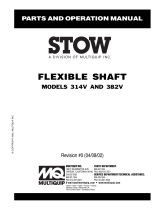 MQ Multiquip 314V-382V Operating instructions
MQ Multiquip 314V-382V Operating instructions
-
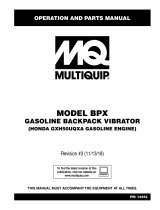 MQ Multiquip BPX Operating instructions
MQ Multiquip BPX Operating instructions
-
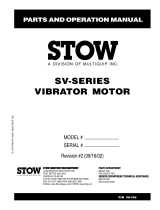 MQ Multiquip SV-SERIES-Motors Operating instructions
MQ Multiquip SV-SERIES-Motors Operating instructions
-
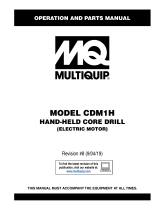 MQ Multiquip CDM1H Operating instructions
MQ Multiquip CDM1H Operating instructions
-
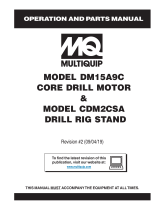 MQ Multiquip DM15A9C-CDM2CSA Operating instructions
MQ Multiquip DM15A9C-CDM2CSA Operating instructions
-
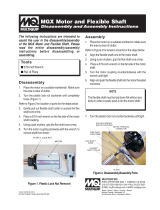 MQ Multiquip MGX-motor Operating instructions
MQ Multiquip MGX-motor Operating instructions
-
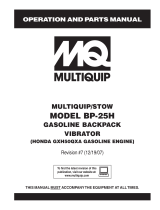 MQ Multiquip BP25H Operating instructions
MQ Multiquip BP25H Operating instructions
Other documents
-
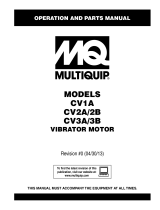 MULTIQUIP CV3A/3B User manual
MULTIQUIP CV3A/3B User manual
-
Husqvarna BV 20H User manual
-
AirLive WN-2600HD User manual
-
Barco RCP-120 User manual
-
Harbor Freight Tools 94344 User manual
-
Cobalt Digital 9911DA-8-BPX Dual-Input 3G/HD/SD-SDI / ASI 1x8 Distribution Amplifier and Bypass Switch User manual
-
Silvercrest DV-1000HD Owner's manual
-
Silvercrest DV-1000HD User manual
-
ADJ Fog Storm 1700HD User manual
-
Flextool FPV-45 User manual








































